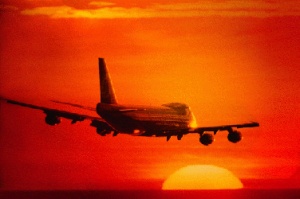PwC: Aviation profitability stable in 2013

Revenue growth has recovered to pre-recession levels and the US airline industry is expected to maintain profitability in 2013, according to Tailwinds, a report on the airline industry from PwC.
However, while the industry has become better at managing capacity and generating ancillary revenues, it faces rising costs for fuel, labour and maintenance.
To achieve profitability under these conditions, airlines are focused on operating more efficiently and securing new revenue streams, including replacing 50-seat jets with larger planes within the regional airline industry.
Over the past decade, fuel costs have more than doubled, rising to 28 per cent of operating expenses.
Airlines have tried to mitigate this increase through hedging strategies and the use of newer, more efficient aircraft along with improved operating procedures.
The crack spread, or gap between jet fuel and unrefined oil price, has also increased to 25 per cent of total jet fuel cost as refineries focus on higher margin product, creating an additional cost challenge for airlines.
Some carriers are taking aggressive steps to address the crack spread, even to the point of acquiring refining capabilities.
The US Energy Information Agency forecasts lower petroleum prices in 2013, from an average of $94 per barrel in 2012 to $93 per barrel in 2013 and $92 in 2014, which should help drive improved margins for domestic airlines.
Supporting revenue growth, load factors have increased by almost four percent since 2008 due to better capacity discipline and reduced supply, driven by industry consolidation.
Since 2008, there has been an eight percent reduction in the number of flights, but only a one percent decrease in total passengers, according to the Bureau of Transportation Statistics.
In order to maintain revenue at a time of high fuel prices, labour and maintenance, airlines are also looking toward baggage, standby, and cancellation and change fees, as well as from on-board concession and other amenities.
“There’s no question the domestic airline industry is undergoing a renaissance marked by increased revenue and stable profitability,” said Jonathan Kletzel, US transportation and logistics leader, PwC.
“The price of domestic airline tickets has increased in line with inflation over the past five years, growing less than two percent in real terms, and airlines have boosted revenue by charging new fees as well as introducing ancillary products.
“When taking into account all fees and ancillary revenues, airlines are seeing as much as a nine percent increase in average base airfare.
“Going forward, you can expect airlines to roll out additional sources of revenue, by strategically charging fees and bundling services that are aimed at enhancing the travel experience.
“These factors, combined with the prospect of lower fuel prices, support a positive outlook for the industry in 2013.”
Labour expenses, which accounted for approximately 23 per cent of airline expenses in 2012, are also on the rise.
Over the past five years, average salaries for airline employees have been increasing due to consolidation.
“When airlines negotiate merger terms, they often agree to higher salaries in order to gain union buy-in, reversing some of the reductions implemented during past bankruptcies,” Kletzel continued.
“An impending pilot shortage is also likely to result in higher pilot salaries. Starting in August, new commercial co-pilots will need a minimum of 1,500 hours flight experience, six times the current requirement.
“Next year, the Federal Aviation Administration will also require more rest time between flights.
“These changes are coming at a time when baby boomer pilots are reaching the mandatory retirement age, military pilots are staying in the military longer, and foreign airlines are competing for pilots.”
Additionally, aircraft maintenance expenses are rising, with costs per seat mile increasing over 16 per cent in the past five years, driven by an aging fleet and increased engine maintenance costs.
The average age of the US fleet increased from 11.8 years in 2008 to over 13 years in 2012.
Engine maintenance costs have increased because of aging and reduced competition as engine OEMs increase their share of maintenance, repair and overhaul market.
Airlines are looking to leverage advanced analytics and predictive maintenance to control these increases, but are hampered by legacy IT platforms.
Due to these and other factors, operating income per available seat mile declined to 0.28 cents in 2012, down from 0.53 cents in 2011 and 0.79 cents in 2010.
The overall net result is an industry that faces very narrow operating margins, despite an improved revenue environment.
“Airlines will continue to be challenged by high expenses, especially fuel costs, but they’re taking the necessary steps to support profits in the near-term,” said Kletzel.
“Over the longer term, we expect airlines to benefit from deliveries of new, more fuel-efficient aircraft, reducing both maintenance and fuel costs.
“Operational improvements, consolidation and ancillary revenues will also help to support revenues, boding well for the industry outlook.”
PwC’s report also includes a special section on issues facing the regional airline industry, including the need to begin replacing the 50-seat jets with larger planes.
“Less than 20 years since its introduction, the 50-seat jet is once again having a game-changing effect on the airlines.
“Only this time, the aircraft is being viewed as a liability in terms of cost effectiveness,” commented Kletzel.
Its small size limits the jet’s profitability at a time of high fuel prices and less attractive capacity purchase agreements.
Regional airlines are beginning to make the move to larger, 70-to-90 seat jets, with production on the rise, as larger jets can spread fuel costs and overhead over more seats, reducing unit costs.
In addition to fuel efficiency, the larger jets offer an opportunity to increase fares.
With 20 or more additional seats, airlines can offer first class and premium economy sections, providing an advantage for both the airlines and their customers.

